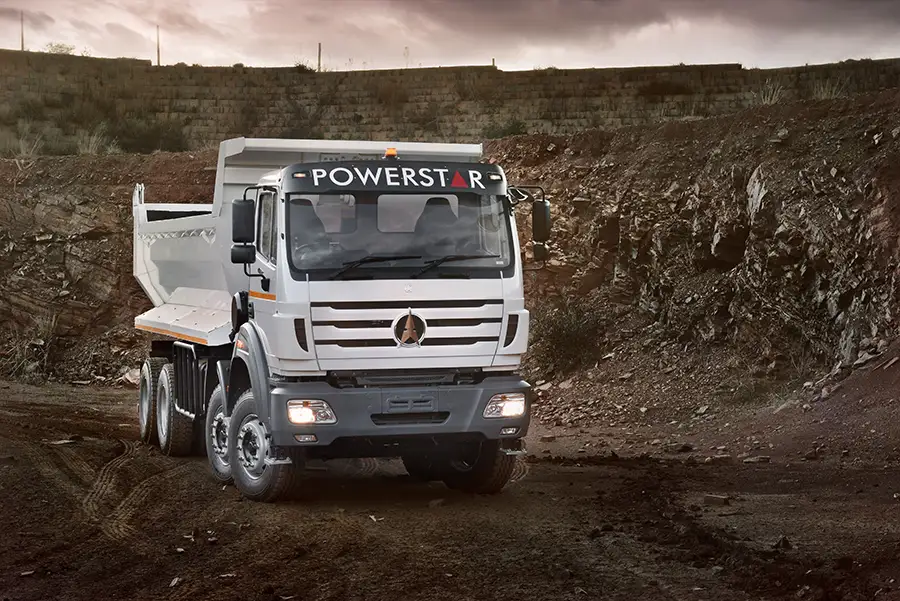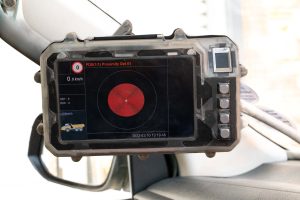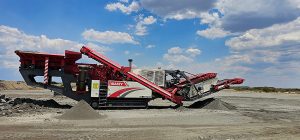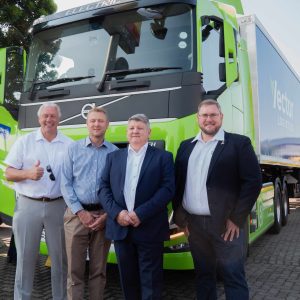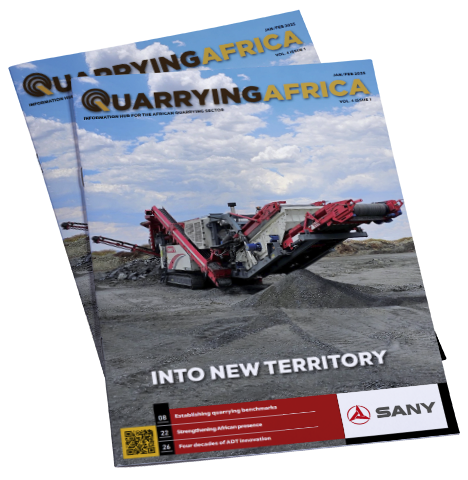Since taking over the local distribution of Powerstar back in 2010, Ever Star Industries has put the brand on a continuous growth trajectory. The Powerstar brand made its local debut as far back as 2006 under the distributorship of Super Group at the time.
During the early days, completely built units were shipped into the country, before ESI started assembling locally at its production facility in Pietermaritzburg, KwaZulu-Natal, in 2007. In 2010, ESI took over the sales and support duties of the brand in southern Africa, ushering in a period of constant growth for the brand.
Over the years, Powerstar has become the jewel of the construction tipper truck market in South Africa, establishing itself as a market leader in that segment. The South African dominance has been replicated in cross-border countries such as Zimbabwe, Mozambique, Botswana, Zambia, and Namibia. More recently, Zambia and the Democratic Republic of Congo (DRC) have been added to that ever-growing list.
Rodney Selesnick, Senior Head of Sales at ESI, says the company currently ships out about 800 trucks per year, which is close to capacity for its current infrastructure. Of this number, between 200 and 300 units are destined for cross-border markets every year. Given the increased demand, Selesnick says there are plans to increase the capacity of the assembly plant to 1 500 units per year to cope with the growth in southern Africa.
“In recent years, the challenge has shifted from finding customers, to stock availability. To provide context, our next three semi-knocked-down (SKD) shipments for tippers and water tankers have already been sold out before they have arrived. One of our cross-border clients who runs in excess of 200 Powerstar trucks has just placed an order for 30 more units. Our dealers are doing extremely well, with hardly any stock on the ground due to the high demand,” explains Selesnick.
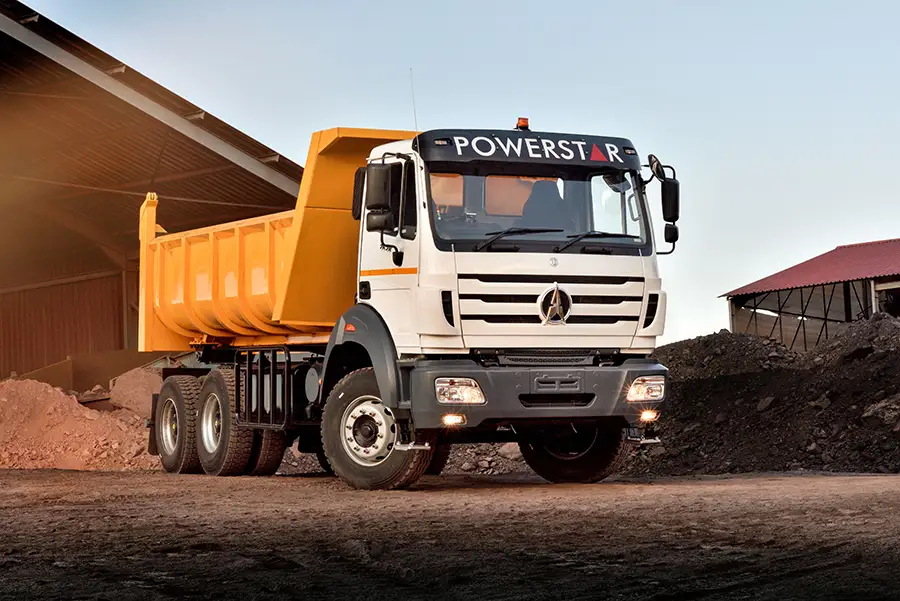
Strong footprint
One of the growth pillars of the Powerstar truck has always been the strong aftermarket regime created by ESI. As part of its growth strategy in southern Africa, the company has invested heavily in its dealer and business partners across the region. In Namibia, ESI has two dealer partners which, according to Selesnick, are doing very well. The same goes for Botswana, where the single dealer appointed to look after that market is gradually growing its sales.
In Mozambique, ESI has a dedicated sales dealer and a separate service dealer. The Eswatini dealer takes care of both sales and service of the range, while Lesotho, currently a small market, is supported by ESI’s existing dealer in the Free State, South Africa. The Zambian dealer, and the DRC dealer, are both part of the same group, and while the DRC has, and is plagued, by conflict, political upheaval, and instability, it is showing signs of renewed energy and growth. Following the introduction of left-hand derivatives in its offering, ESI can now offer its Powerstar range to the DRC market.
Zimbabwe, supported by an extremely capable dealer, has been one of the more exciting markets in recent years. To provide context, between 2015 and 2016, Zimbabwe only accounted for about 12 to 16 units per year. In 2023, a whopping 150 units were sold into this market. Over and above the spectacular product range lies an unrivalled aftersales support, which has been key to the Zimbabwean growth.
“Traditionally, a big challenge in cross-border markets such as Zimbabwe has always been the influx of used truck imports from, for example, the UK,” says Selesnick. “However, the situation has changed dramatically in recent years, with imports falling away due to the unavailability of spares, support and higher costs.”
In addition, the government of Zimbabwe appointed Bureau Veritas in 2016 to conduct pre-shipment assessment in order to ensure that all listed imported products, such as pre-used trucks, meet quality, safety, health and environmental standards in line with the World Trade Organisation agreements. A lot of direct imports from foreign countries have struggled to meet these requirements.
ESI, confirms Selesnick, has already been issued with its Certificate of Conformity by Bureau Veritas. “By introducing the Consignment Based Conformity Assessment, the Zimbabwean government has successfully stopped the importation of delinquent, non-quality products into the country,” he says.
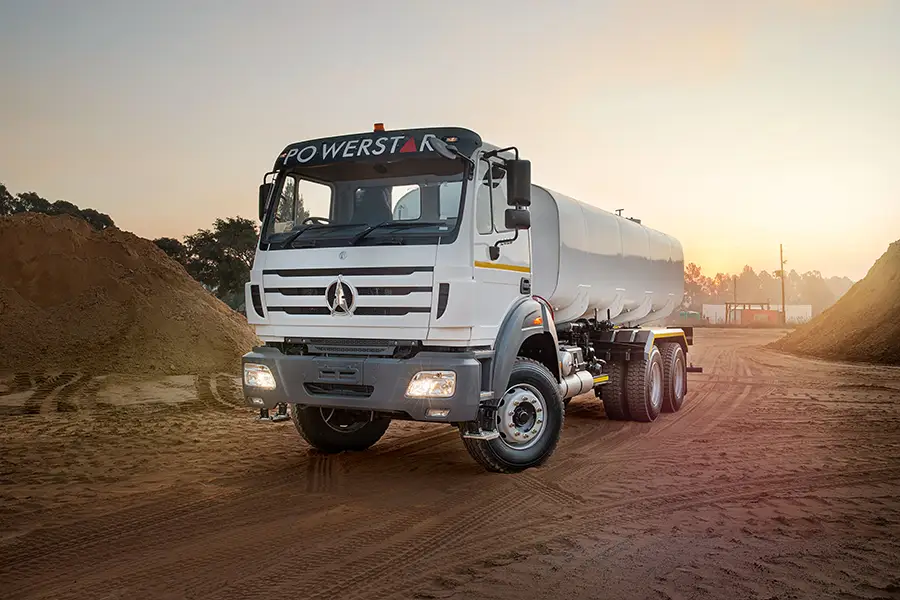
Growth pillars
One of the major growth pillars of the Powerstar range in southern Africa is the tough nature of the product. Most of the operators running the Powerstar, says Selesnick, have realised that the truck is rugged, giving them three to four lifecycles, even in arduous applications such as construction and mining.
The favourable price point, complemented by the proven lower total cost of ownership (TCO), is another major success driver of the Powerstar range in southern Africa. To provide context, says Selesnick, an injector for the 2628 or 4042 8×4 truck costs around R600, while a new engine for a Powerstar truck is in the region of R130 000, and a gearbox is around R70 000. These components have proved to provide several lifecycles for the truck. For example, ESI has tracked some engines in tippers and water tankers that have already clocked over 1-million km, and counting.
“Our secret to success is, however, not only due to the quality and the price point of the truck, but also the huge investment we have made in parts and aftermarket service. At any given time, our parts stockholding is greater than R120-million, housed in three big warehouses, of which two were recently acquired, and situated close to our Pietermaritzburg assembly plant,” says Selesnick.
One of the growth pillars in southern Africa is the lean structure at ESI, which allows for quick decision-making. For example, in his cross-border team, Selesnick has four people who are responsible for the sales targets of 300-400 units per year, representing 40% of ESI’s annual truck sales.

The range
In terms of the range, Selesnick says ESI has not changed the blueprint for its success and has for years kept its tried and trusted product offering. The range starts with the 2628 series, which is offered standard in tipper form with a short wheelbase. A long wheelbase option is available, which can be fitted with a conventional dropside. A 2628 concrete mixer is also available.
The 1627 can undertake several roles – it has been used as a military support vehicle, a water tanker, a tipper, container carrier, and dropside. It is a 4×4 truly designed for tough African conditions, says Selesnick.
The 3335, which comes as a long wheelbase truck, is suited for mining operations, where it can be deployed to carry high-density materials such as chrome. The 8×4 version of the 3335 is a multi-role truck which can be deployed as a tipper, water tanker and drill rig carrier. In fact, it is highly preferred in drill rig applications because of the heavy nature of the machinery it has to carry, the added benefit of dual turning axles, and the availability of sufficient engine power for the task at hand.
“The 2642 is a well-priced truck tractor which can do just about anything. It is cost-effective in terms of both the price and maintenance cost. It is used extensively in cross-border markets because of the poor state of roads in many of those countries. In terms of application, it is ideally suited for side tipping, and for example in coal, and other relevant mining sectors. We have also engineered a special long wheelbase for carrying bricks, an application where high horsepower is a necessity,” he says. “Depending on seasons, the best sellers are the 2628, the 2642 truck tractor and the 3335 8×4.
Commenting on the outlook of the business this year, Selesnick says ESI has done its homework and 2024 is going to be a year of satisfying customer needs and focusing on internal processes to improve production. “We are incredibly happy with the robust dealer network we have in all markets. We have in the past two years invested in training – both technical and sales. A skilled workforce is essential for our future success,” concludes Selesnick.
